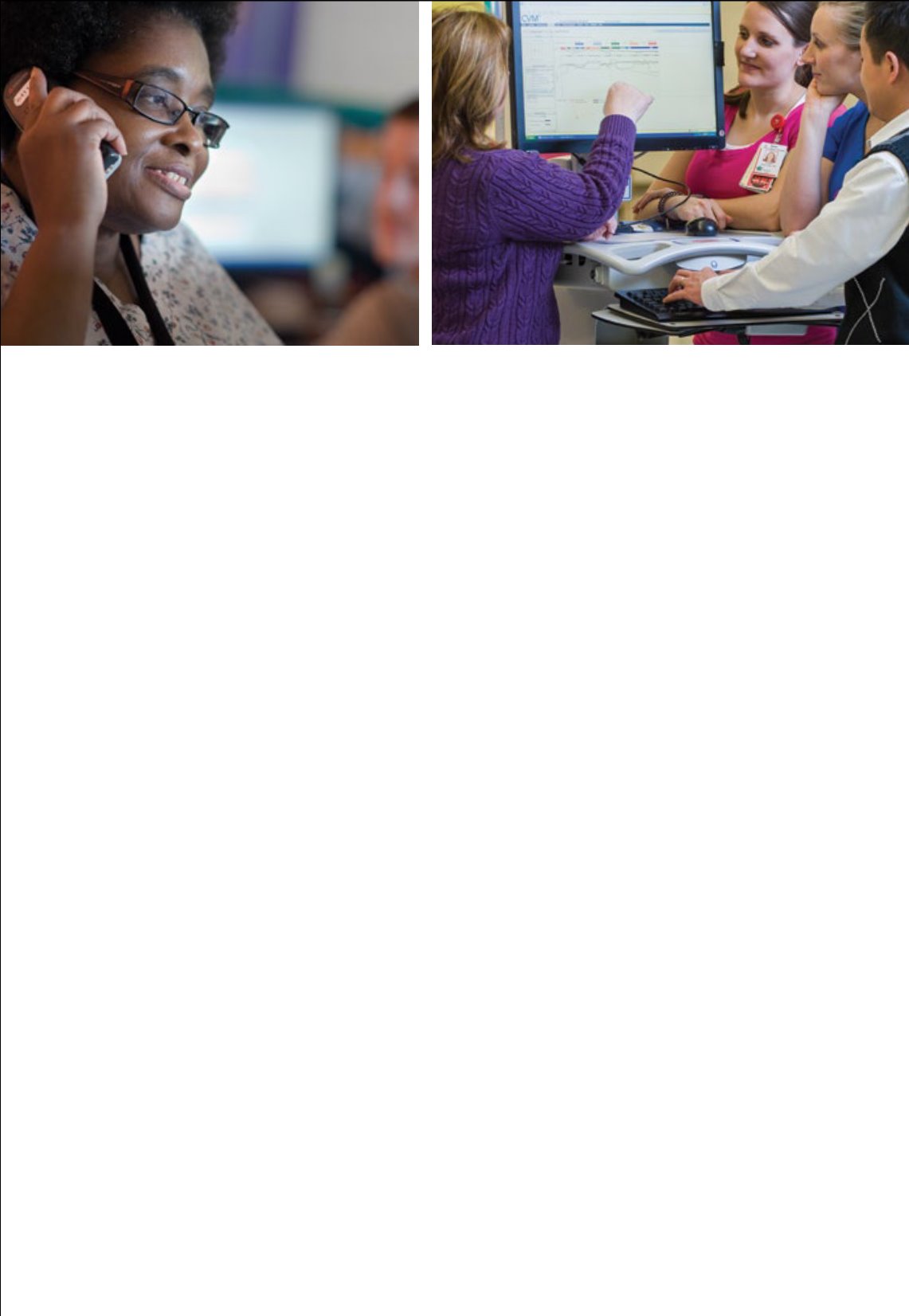
One of the newest innovations in clinical informatics is the use of digital bar codes.
Providers scan the barcode on a patient’s wristband for positive patient identification.
The bar codes identify patients and continually update the electronic medical records.
Medications are scanned and matched to the patient’s medical record number, providing an
additional safety net for administering the correct medication, accurate dosing and correct
routing. The system also improves security in hospital obstetric units by tracking visitors in
and out of the secure units.
Sanders said technology has become such an integral part of society that maximizing it for
nursing only makes sense.
“Nurses are surrounded by technology, ranging from
communication devices and monitors to pumps
and our electronic medical record,”
Sanders said.
“We touch information devices hundreds of times
during a shift.The field of clinical informatics bridges
the gap between clinical technology and the practice
of nursing.”
Another exciting area in clinical informatics involves research. Clinical informatics can
help nurses access research right from a patient’s bedside through mobile applications or
approved internet websites. With so much research at their fingertips, nurses have the
advantage of knowing what course of action to take based on best practices.
“Technology has the ability to improve patient care, and it allows us to
streamline our activities by asking the right questions and providing the
right answers,” Sanders said. “If we can make even everyday activities
easier for our patients and our staff, then we’ll make the hospital
experience better.”
4 2
N U R S I N G O U T C O M E S
2 0 1 3
|
T E X A S C H I L D R E N ’ S H O S P I T A L


